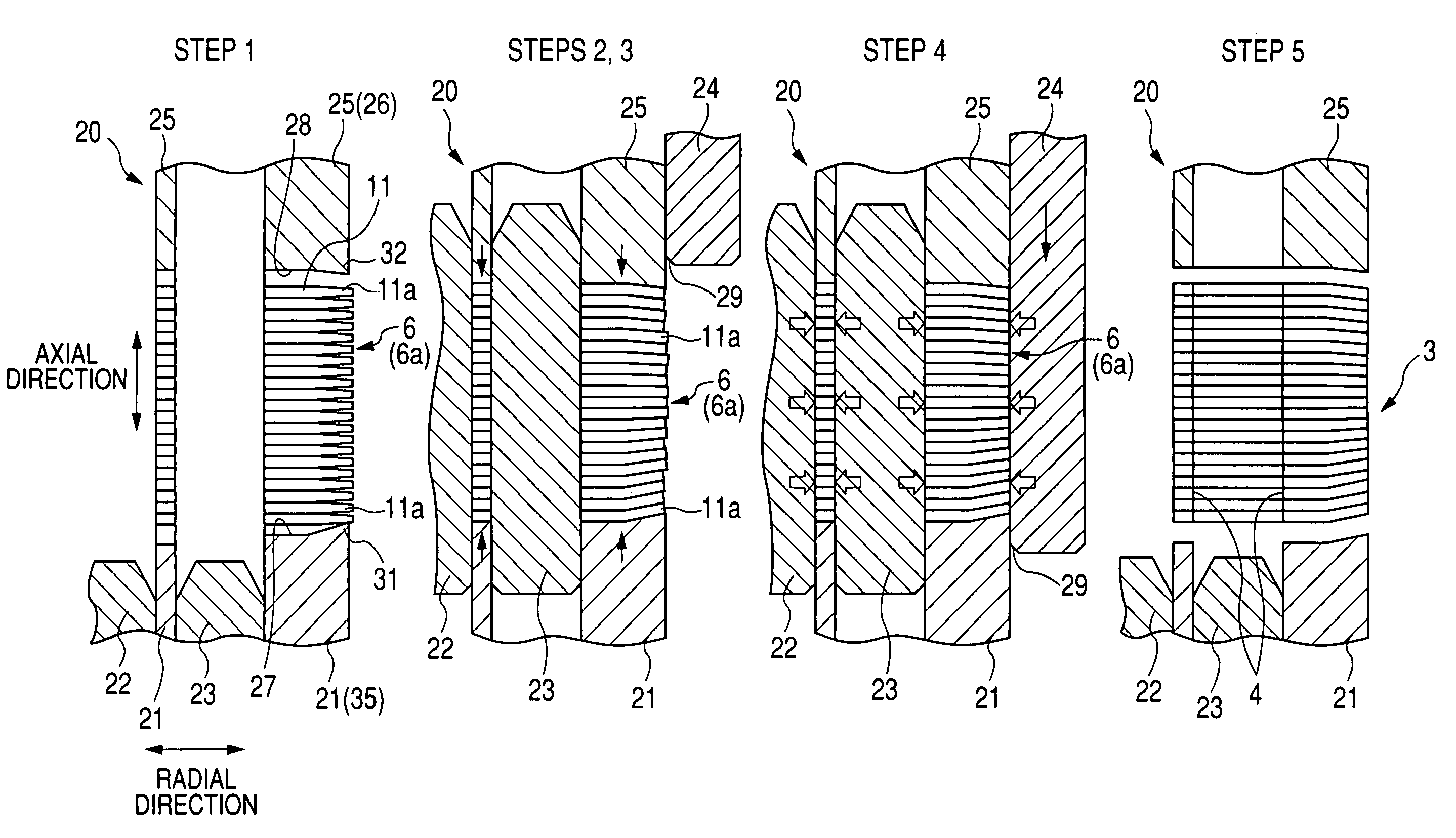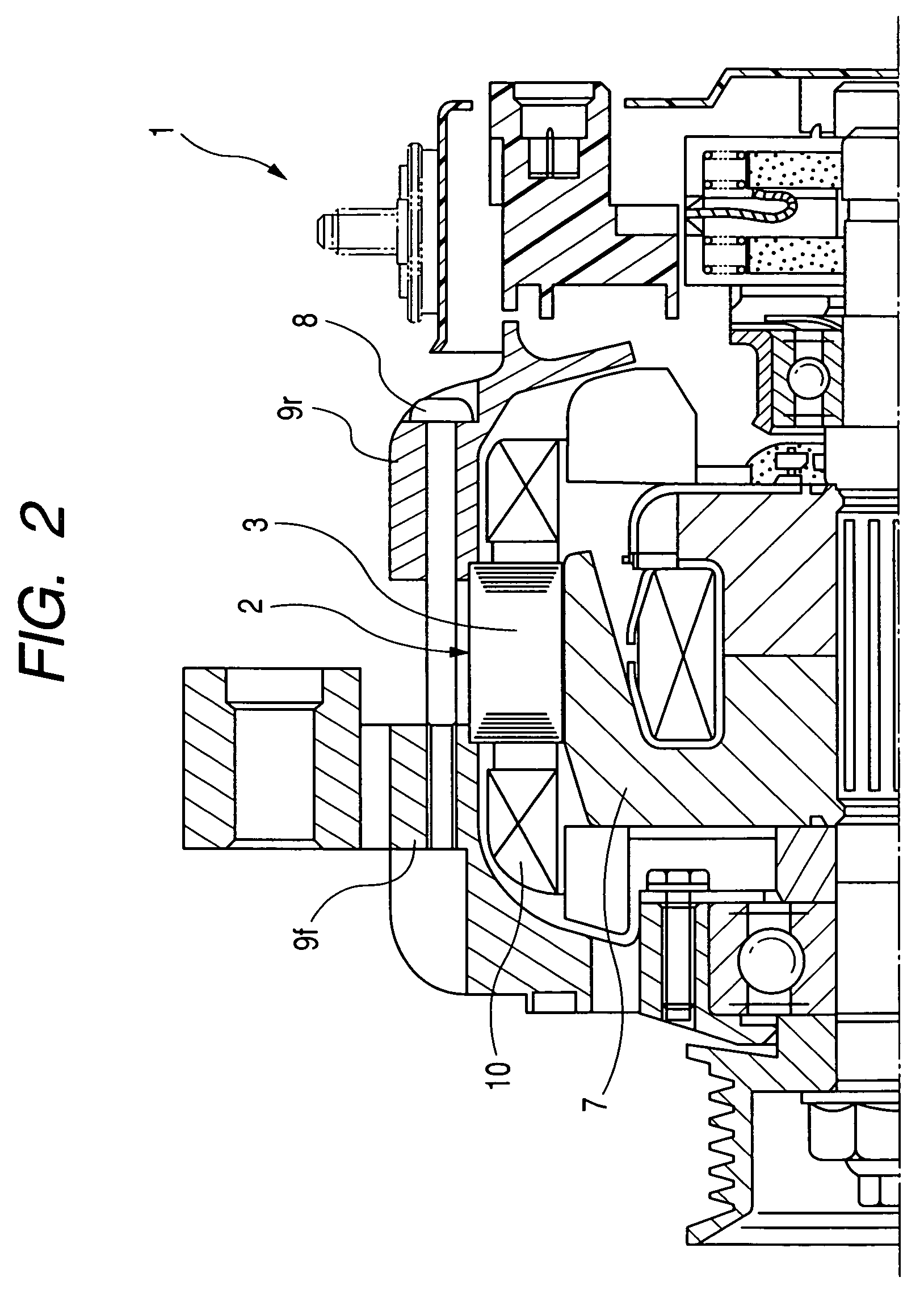Method of manufacturing stator core of electric rotating machine
a technology of electric rotating machines and stator cores, which is applied in the direction of magnets, electromagnets, magnetic bodies, etc., can solve the problems of lowering the level of electric power, lowering the mechanical strength of steel sheets, and increasing the iron loss in the core caused by the operation of the alternator, so as to increase the effect of heightening the resistance to the ironing load
- Summary
- Abstract
- Description
- Claims
- Application Information
AI Technical Summary
Benefits of technology
Problems solved by technology
Method used
Image
Examples
embodiment 1
[0040]A method of manufacturing a stator core of an alternator representing an electric rotating machine mounted in a vehicle will be described. FIG. 2 is a side view, partially in cross-section, of an upper half portion of an alternator with a stator core.
[0041]As shown in FIG. 2, an alternator 1 has a cylindrical stator 2, a columnar rotor 7 disposed in a center hole of the stator 2, a front frame 9f covering the stator 2 and the rotor 7 on the front side of the alternator 1, a rear frame 9r covering the stator 2 and the rotor 7 on the rear side of the alternator 1, and a plurality of through bolts 8 fastening the stator 2 to the frames 9f and 9r. The stator 2 has a cylindrical stator core 3 and a plurality of stator coils 10 wound on the core 3. The core 3 is fixed to the frames 9f and 9r by the through bolts 8. The rotor 7 acts as a field. The stator 2 acts as an armature.
[0042]With this structure of the alternator 1, when the rotor 7 is rotated on its own axis in response to an...
embodiment 2
[0103]In the first embodiment, as shown in FIG. 6, when the member 25 presses the core 6 on the member 21, the outer end portions of the core 6 are bent along the shapes of the protrusions 31 and 32. In this case, the outer end portions placed at the axial ends of the core 6 are largely bent, but the outer end portions placed in the center of the core 6 are slightly bent. Therefore, when the core 6 is manufactured so as to have the sheets 11 approximately set at the same outer diameter, the margin for ironing (i.e., length of the outer end portion protruded from the members 21 and 25 in the radial direction) is large in the center of the core 6 but is small at the axial ends of the core 6. To uniformly and reliably shorten the outer end portions at a predetermined value, the core 6 is manufactured such that the margin for ironing is appropriately large at any position of the core 6 in the axial direction.
[0104]In contrast, in the second embodiment, the ironing member 24 is modified....
PUM
| Property | Measurement | Unit |
|---|---|---|
| shape | aaaaa | aaaaa |
| lengths | aaaaa | aaaaa |
| length | aaaaa | aaaaa |
Abstract
Description
Claims
Application Information
 Login to View More
Login to View More - R&D
- Intellectual Property
- Life Sciences
- Materials
- Tech Scout
- Unparalleled Data Quality
- Higher Quality Content
- 60% Fewer Hallucinations
Browse by: Latest US Patents, China's latest patents, Technical Efficacy Thesaurus, Application Domain, Technology Topic, Popular Technical Reports.
© 2025 PatSnap. All rights reserved.Legal|Privacy policy|Modern Slavery Act Transparency Statement|Sitemap|About US| Contact US: help@patsnap.com



